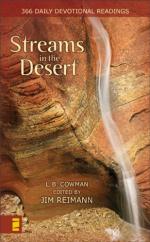|
This section contains 234 words (approx. 1 page at 300 words per page) |

|
Scientists measure a region's aridity by comparing the amount of precipitation (rain, sleet, or snow) to the rate of evaporation. Evaporation always exceeds precipitation. Deserts can be classified as extremely arid (less than 1 inch [2.5 centimeters] of rain per year); arid (up to 10 inches [25 centimeters]); and semiarid (as much as 20 inches [50 centimeters]) of rain per year, but so hot that moisture evaporates rapidly. Most true deserts receive less than 4 inches (10 centimeters).
Except for those at the North and South Poles, which are special cases, deserts are generally classified as hot or cold. Daytime average temperatures in hot deserts are warm during all seasons of the year, usually above 65°F (18°C). Nighttime temperatures are chilly and sometimes go below freezing. Typical hot deserts include the Sahara and the Namib Desert of Namibia. Cold deserts have hot summers and cold winters. For at least one month during...
|
This section contains 234 words (approx. 1 page at 300 words per page) |

|




